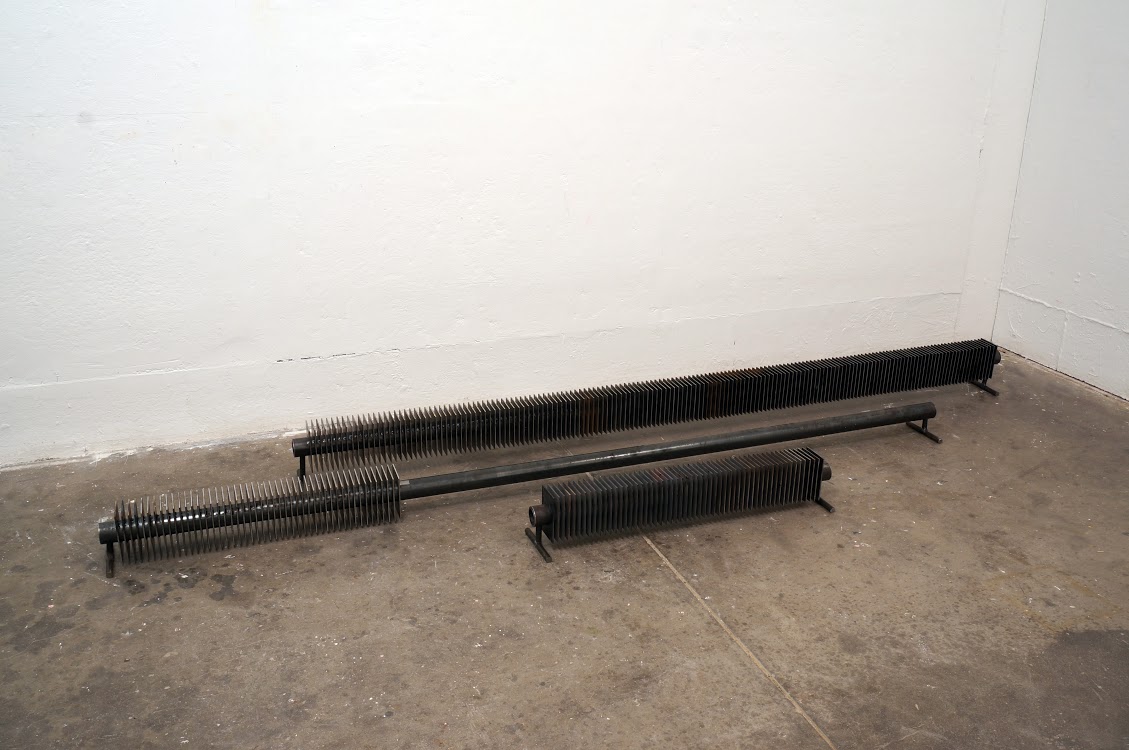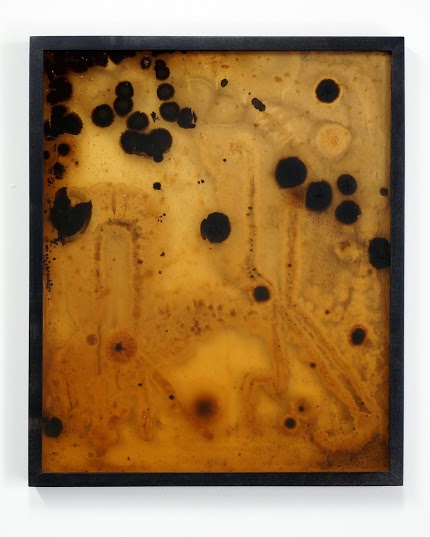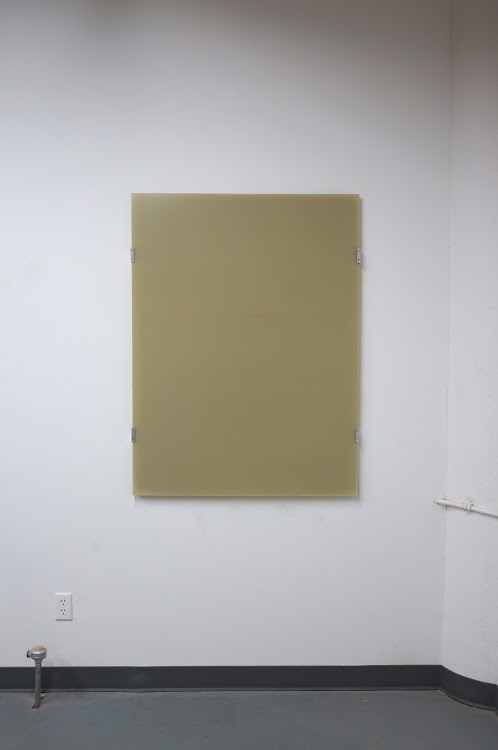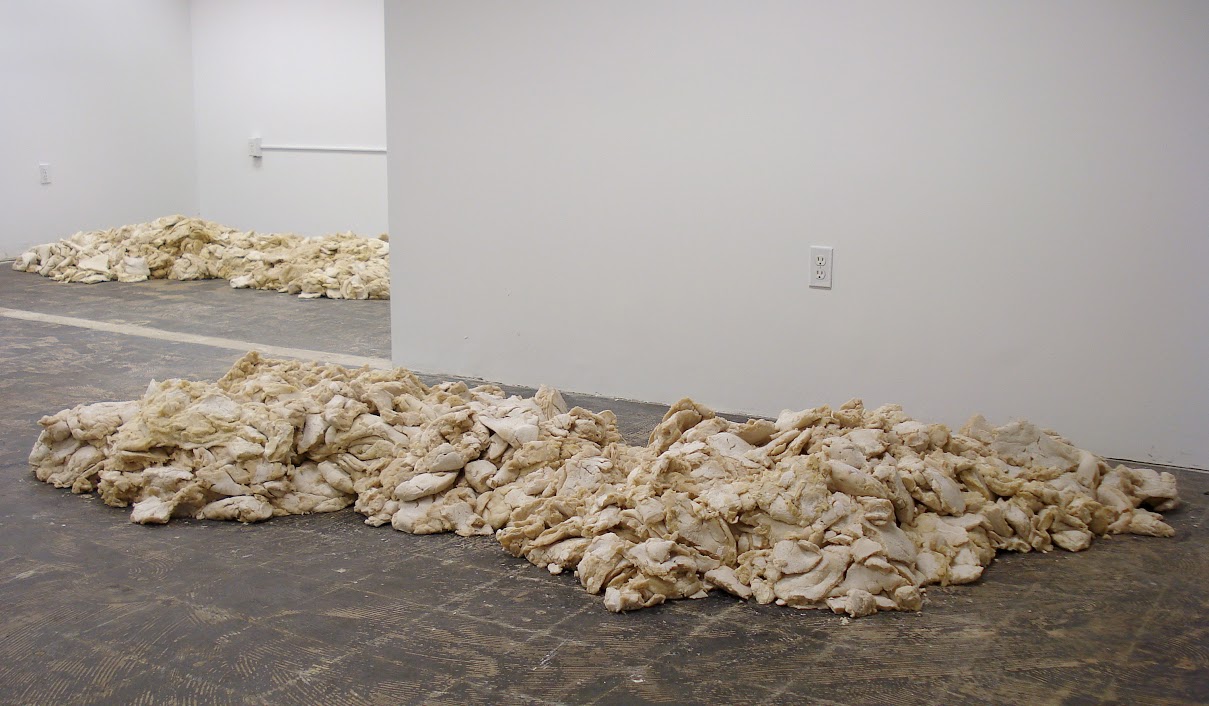The Comp Magazine recently caught up with artist (and alum) Ryan Wolfe. Upon completing his studies at USF in 2004, Wolfe continued to produce work in Chicago then entered the Yale University Art MFA program in sculpture. In the past ten years, Wolfe has continued to expand upon his research and practice investigating abstraction, engineering, and the use of organic and industrial materials.
Can you begin by discussing your art practice? What type of projects are you currently working upon?
I just started working with a CNC router, and I’m in the process of making aluminium drawings. It’s fairly new to me so I’m figuring out my relationship to it. The CNC technology breeds a great deal of controversy and excitement, whether its replacing jobs or revolutionizing surgery. There is a hot debate going on now about people printing their own guns. I don’t necessarily intend on bringing these issues up in the work but I’m not looking to show off a CNC’s capabilities. Like other work I make, the tool itself is important to my process and will change the works meaning.

Ryan Wolfe, Radiator, Steel, Approx. 12’x3’x6″, 2014
I consider myself to be an artist who works in abstraction and have been interested in the aesthetics of engineering. I find the discipline compelling because it is involved with empirical thinking, and the question of aesthetics are an afterthought. Its interesting to find the run off of that, to consider it within a separate dimension.
You also teach at the Hartford Art School. How does your practice translate into the studio and classroom?
It’s a good question, I don’t show too much of my own work because I don’t want students to be influenced by the way it looks. If a student wants to know more I’ll show them but it’s on a one-to-one basis. I prefer to ask the same questions I’d ask of myself. It is more a way of seeing then what something should look like.

Ryan Wolfe, Hand Gesture, Agar, Mold, Bacteria, Watertight Frame, 19×15.5×1″, 2013
With teaching I like being around enthusiasm. It’s also another way to insert myself within culture. When showing a work in a gallery, for example, the reception of a work is often kept private but in a healthy class, the dialog is active and challenging.
Are their specific artists or artworks that you find an affinity with?
I share Mike Kelley’s writings in the classes I teach. I appreciate how he purges his ideas. He allows a seemingly arbitrary object or idea to enter his work and considers it with a great deal of seriousness.
A book I continually revisit is Batia Suter’s Parallel Encyclopedia. It’s a great book for brainstorming. The images are arranged on formal characteristics and it gives a comprehensive survey of printed history. It’s aware of its own shortage of information, so it can be interpreted differently every time you open it.
Alina Szapocznikow had a retrospective at the Moma a couple years ago. I still think about the show a lot. She deconstructs figurative sculpture in a natural and intuitive way that’s playful but still rigorous. She does a lot of the work so the viewer can either sit back and enjoy, or engage more fully.

Ryan Wolfe, G10/FR4, Fiberglass Resin, Aluminum, Stainless Steel Hardware, 36x40x1.5″, 2014
Do you have a specific philosophy that drives your work?
I believe the health of culture relies on individuals affording the opportunity to enrich their own private imagination – not under the guise of Art per se. It is definitely in line with Beuy’s idea that everyone is an artist but perhaps not as idealistic.
I began volunteering last year with Jeff Greene who runs a prison art program for Community Partner’s in Action. We installed his annual prison show which is a collection of work that inmates make in his workshops. He pushes them to investigate their own realities as opposed to some cliched escapist idea of art and the work is outstanding. The prison environment suppresses the mind as much as it does the body. He is one of the few people doing the dirty work to help people engage with their imagination.
What role did your studies at USF and Yale play in defining your current art practice?
At risk of sounding like a promotion for St Francis, I loved my time there. Looking at the program now, it seems like you have new facilities that didn’t exist when I went to school. I remember making most of my work on a chop saw that Paul brought down from his own studio. I also remember Chester bought a really nice large-format Epson for his studio and let us use it a number of times. It taught me to be resourceful which reflects the way things are for an artist, you have to make due with what’s there.

Ryan Wolfe, Dough Pile, Dough, Salt, Approx. 8x4x2′, 2012
Yale was a good experience but for all the reasons I wouldn’t have expected. I thought I would be overwhelmed but we didn’t have to write a thesis, only took two academic courses, and had a total of 4 critiques over the two years. It was exciting because then you were able to construct your environment. It felt a bit Nietzschean, I interpreted Jessica Stockholder to essentially say, ok, you have the time, lets see what your self discipline looks like, what do you do when nobody has expectations of you? That helped me a because I was given a blank slate and started building. I think the initial results may be slower that way, but it’s more sustainable.
Ryan Wolfe lives and works in the Bronx, New York and Hartford, Connecticut and teaches as an Adjunct Professor at the Hartford School of Art. Wolfe has exhibited his work at the Nada Art Fair (Dallas, Miami and NYC), Shoot the City (Luxembourg City, Luxembourg), Cave (Detroit, MI), Fountain (Brooklyn, NY) and the Contemporary Art Workshop (Chicago).
Interview by Chester Alamo-Costello


